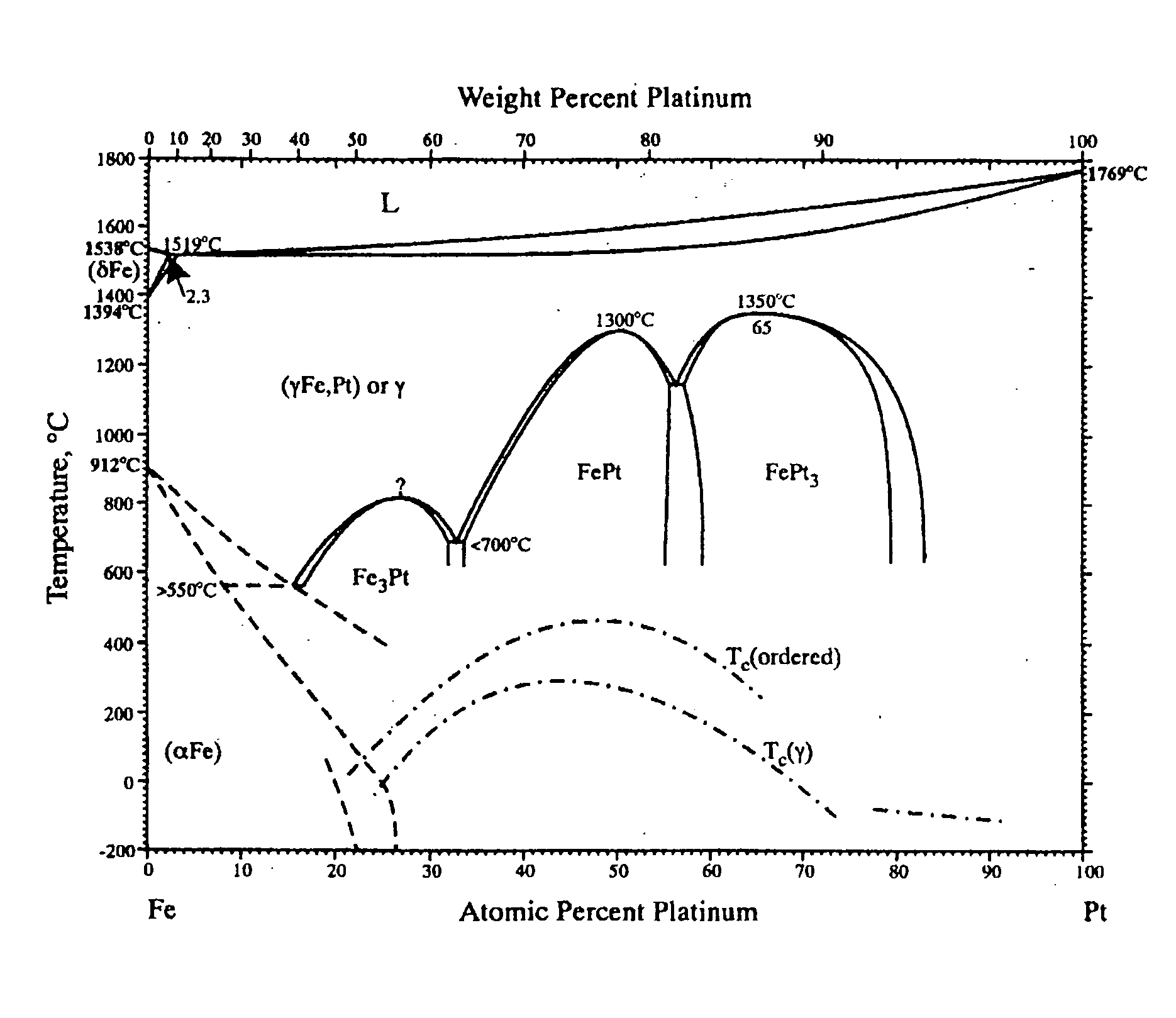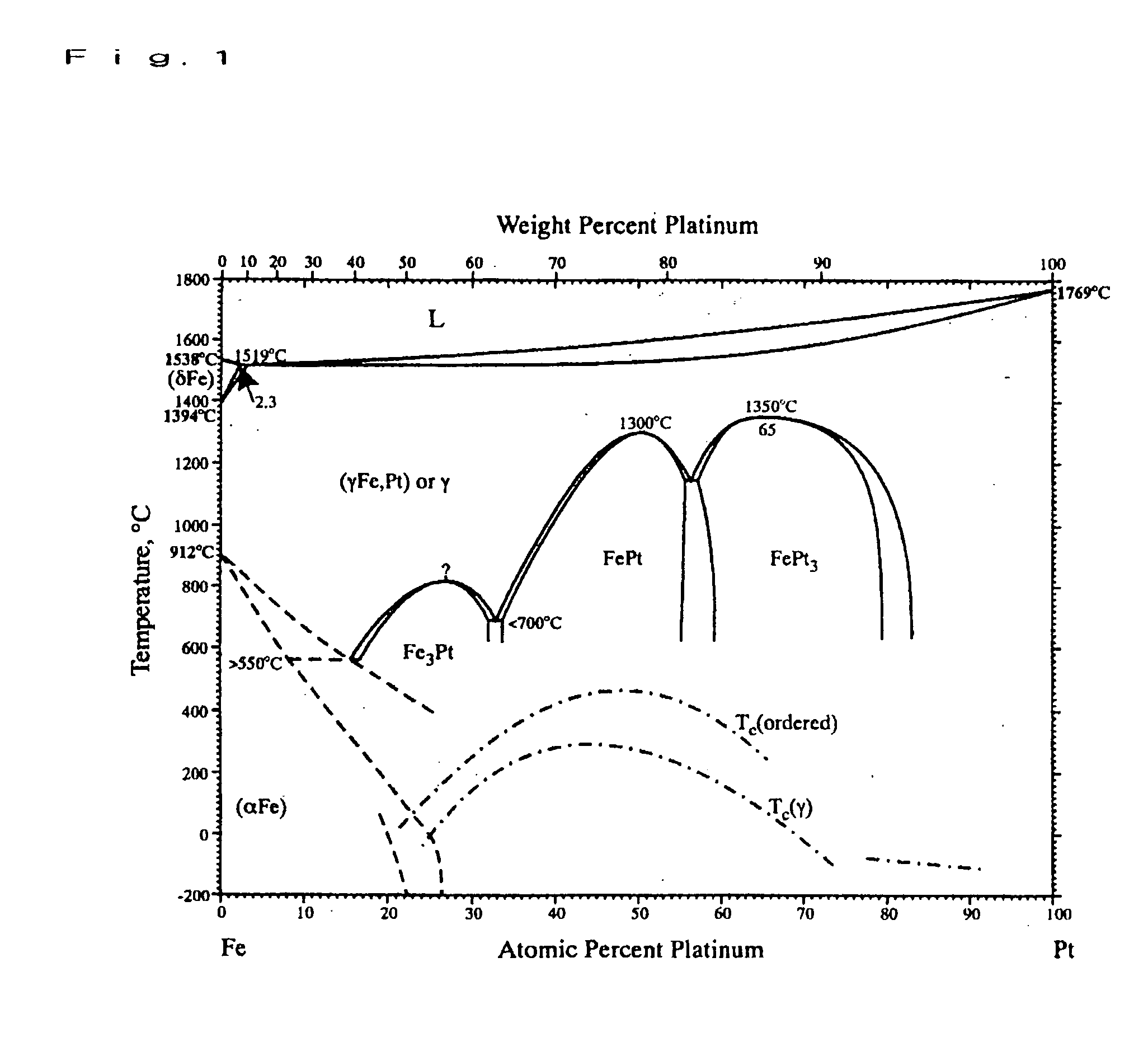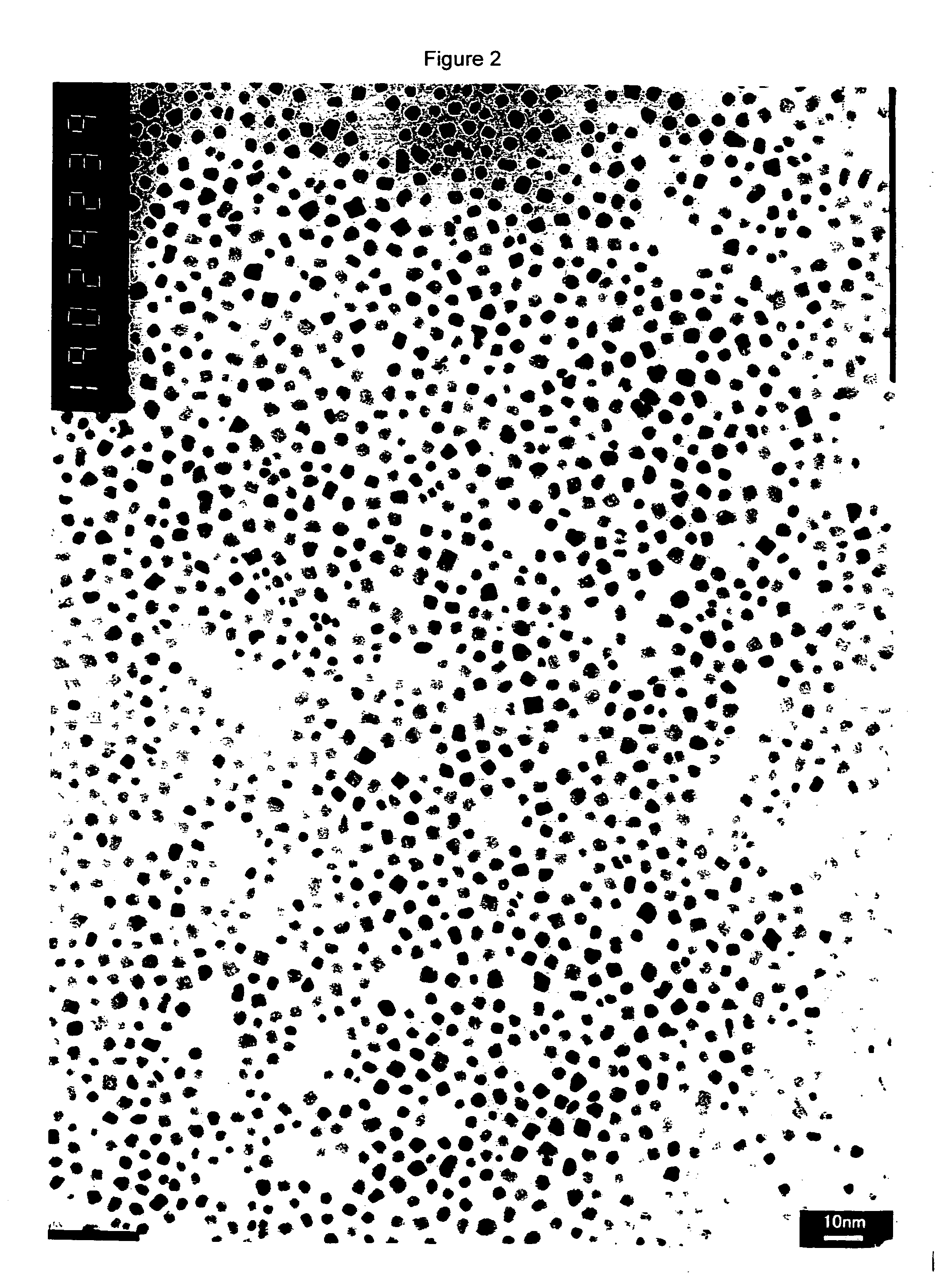Face-centered cubic structure alloy particles and method of manufacturing same
a technology of cubic structure and alloy particles, which is applied in the field of face-centered cubic (fcc) structure alloy particles, can solve the problem of limiting the amount of recording density that can be increased
- Summary
- Abstract
- Description
- Claims
- Application Information
AI Technical Summary
Benefits of technology
Problems solved by technology
Method used
Image
Examples
example 1
[0068] 1.30 mmol / L of iron (III) acetylacetonate and 1.30 mmol / L of platinum (III) acetylacetonate were added to 200 mL of tetraethylene glycol (boiling point: 327° C.) and dissolved until there no solid portions of the iron (III) acetylacetonate and platinum (III) acetylacetonate remained. Then, 25.978 mmol (a mol amount that is 50 times the mol amount of the iron and platinum total) of succinic acid was added and dissolved until no solid portions remained.
[0069] The solution was transferred to a container having a circulator with a reflux condenser and placed on an oil bath, and an inert gas consisting of nitrogen gas was blown into the container at a flow rate of 400 mL / min while the solution was agitated at rotation speed of 160 rpm while being heated. It was refluxed for one hour at 200° C., and the reaction terminated. For the heating, the temperature was elevated at a rate of 10° C. / min (the average temperature elevation rate from 50° C. to 150° C.).
[0070] After the termina...
example 2
[0074] Except for the use of 129.89 mmol (250 times the mol amount of the iron and platinum total) of acetic acid instead of succinic acid as the complexing agent, the procedure used for Example 1 was repeated.
[0075] The TEM-based measurement result is shown in FIG. 3. The average grain size of the primary particles was 5.7 nm, and the particles were seen to have good, sharp crystallinity. The x-ray diffraction showed no diffraction peaks corresponding to (001) and (110) superlattice reflections from an fct structure, only peaks from fcc structures. The x-ray crystallite size (DX) was 7.0 nm. Based on this, the single crystallinity was 0.81.
[0076] The TEM-EDS measurements showed that the average composition in terms of atomic ratio was Fe:Pt=51:49. That is, Xav was 51.0 at %. Also, based on an analysis of the composition of 100 randomly-selected particles, with a standard deviation σ of 10%, 98 particles satisfied equation (1), and only two particles did not. Measurements of magne...
example 3
[0080] The reaction was terminated using the same arrangement and conditions as in Example 1. Specifically, reflux for 1 hour at 200° C. was implemented, and the procedure of Example 1 repeated until the reaction ended. Then, the temperature was elevated (at an average temperature elevation rate of 10° C. / min from 200° C. to 250° C.) to 300° C., at which temperature reflux was carried out for 5 hours.
[0081] After the termination of this process, an amount of ethanol was added that was equivalent to three times the amount of the solution, and the solution was centrifuged, the supernatant liquid was removed, and 100 mL of methanol was added to the residue (the particles), which was then placed in an ultrasonic cleaning tank, where the particles were dispersed. The dispersion solution was then centrifuged and the supernatant removed. Methanol was again added to the residue (particles) which was again dispersed in an ultrasonic cleaning tank and centrifuged for cleaning purposes, and t...
PUM
| Property | Measurement | Unit |
|---|---|---|
| Grain size | aaaaa | aaaaa |
| Temperature | aaaaa | aaaaa |
| Fraction | aaaaa | aaaaa |
Abstract
Description
Claims
Application Information
 Login to View More
Login to View More - R&D
- Intellectual Property
- Life Sciences
- Materials
- Tech Scout
- Unparalleled Data Quality
- Higher Quality Content
- 60% Fewer Hallucinations
Browse by: Latest US Patents, China's latest patents, Technical Efficacy Thesaurus, Application Domain, Technology Topic, Popular Technical Reports.
© 2025 PatSnap. All rights reserved.Legal|Privacy policy|Modern Slavery Act Transparency Statement|Sitemap|About US| Contact US: help@patsnap.com



